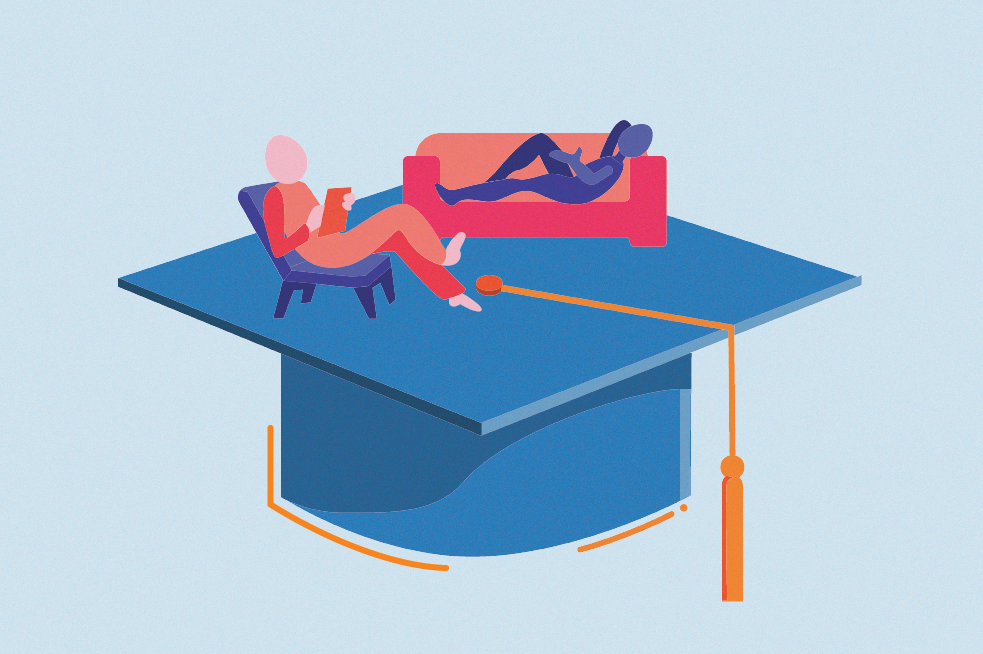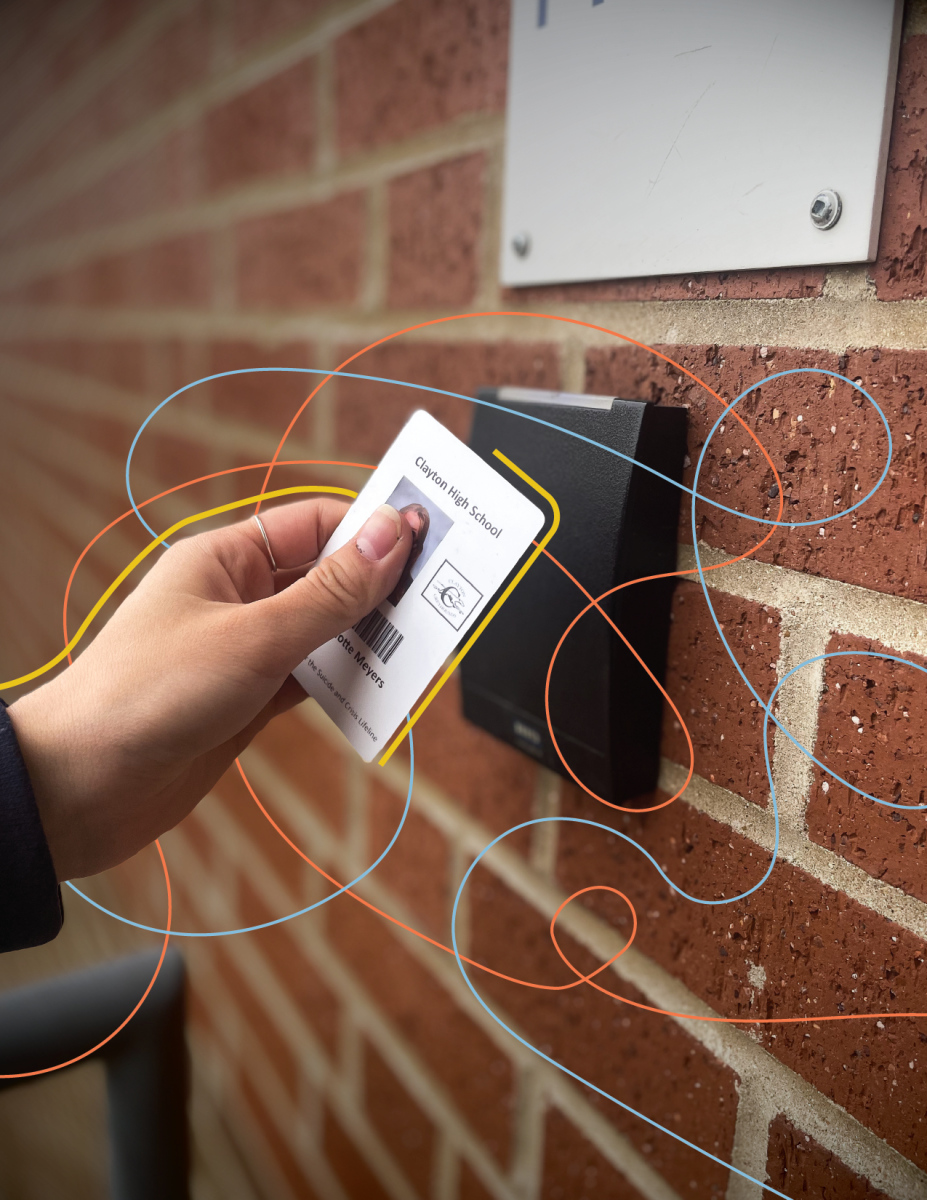In the lower level of the Administration Building, past many desks and behind a locked door, is a room full of magic. It is not the pulling rabbits out of hats or waving wands type of magic – rather, it is magical in the sense that, to most, its powers are completely bewildering. To the unaware, the room contains mysterious stacks of plastic boxes, connected by a colorful weave of wires and adorned with spots of flashing red, green and yellow light. In reality, this room is the technological nucleus of the School District of Clayton, the room that holds servers for everything from Powerschool to First Class to student log-ins. This room, the plastic boxes it so benignly houses and the dozens of technological advances that the District has adopted and incorporated into its function have come to play an increasingly vital and dominant role in the lives of Clayton students and teachers – for better or for worse
A Changing Environment

Back in the 1990s, when CHS Educational Technologist David Hoffman became tech specialist at Captain Elementary, there were 15 computers – Apple IIes – in the entire school. There was no network, no Internet, no email. When he came to the high school nine years ago, teachers didn’t have laptops, there were no library computer labs and no student had a laptop. Even five years ago, when Devin Davis became CIO for the School District, there were no universal logins and there was no unified wireless – the average age of a computer was an ancient seven years old. Times have changed.
“I think the thing that changed it the most was when we gave teachers laptops so they could do their work, and some were resistant then, but I don’t think you could pry one out of their hands now,†Hoffman said. “They became so familiar with how it could help their job that its use just exploded. And now, ask any student or teacher to do work without technology, they’d think you were crazy.â€
Math teacher Barbara Dobbert is likely one of those people. When she graduated college in 1990, she paid her younger sister $5 a piece to type up her cover letters because she was so computer-phobic. Now, doing everything from organizing files, saving Smart files as PDFs, maintaining her website and using WebQuest, she feels “like she can’t teach without [technology].â€Â She even helps lead a teacher training program called TWITL (Technology Works in Teaching and Learning).
It has not been an easy transition from the now seemingly archaic age before technology was widespread. Davis worked hard to install the immense amount of infrastructure necessary to support the District’s needs, and the efforts have paid off. Clayton now possesses an amazing amount of technological potential that can be integrated into the classroom.
“We are in a much better situation than of a lot of school districts as far as our capability and what we have available to us,” Davis said.  “How we leverage that is kind of a case-by-case situation. There are some people who are really taking it to the next level, and there are others who are not. But as far as what we have available to us, we can do anything we want to do. If somebody told me tomorrow that they want to have an open video conference with Timbuktu, we can make that happen – and not everybody can say that.”
The Student Perspective
Student opinion is relatively split on the increasing prevalence of technology in the classroom. Some herald it as beneficial and efficient, while others deride the implementation as extravagant and ineffectual. Tellingly, many students take both sides – seeing technology as being inherently useful but mismanaged at Clayton.
“My experience with technology over the years at CHS, while not extensive, has been a positive one,†senior Colleen Layton said. “Primarily, the ability to access databases has probably proved to be the most beneficial. However, even in the class room, I would not say there has been any technological advances that have had a positive or negative impact on my learning.â€

This opinion is echoed by others like junior Oscar Martinez, who believes that the hardware and software quality is good but that little is being done to ensure that students and teachers are capable of using the given technology.
â€Generally, my experience with CHS technology has been good,†Martinez said. “However, occasionally the network is unreliable and some teachers can’t use the technology they have available.â€
Though junior Ben Kass agrees with Martinez that the technology is quite nice, he said that it is often not used to its full potential.
“Nonetheless, a lot of the technology is effectively useless,†Kass said. “So many teachers don’t use Smart Boards, and computers are replaced too frequently.â€
A large factor in the perceived inability of students to make full use of technology is the lack of education thereof. Beyond library catalog instruction, Kass said education in the usage of other programs is scarce.
“The librarians throughout the system make sure you know how to find books using the library system,†Kass said. “The school expects you to know how to use technology; once you know it they don’t go back to teach you again.â€
Senior Ian Miller also said that he feels that the school takes little time to ensure that students are well-educated in software usage.

“I haven’t received much instruction on the school’s technology,†Miller said. “The only instruction I can remember is typing classes in the fourth and sixth grades, as well as training for the library’s online database sometime early on in high school.â€
Though some may feel student education in regards to technology is lacking, teachers implementing Smart Boards, document cameras and other advances can be very beneficial in certain subjects.
“I think it’s a really nice how Mr. Rice puts up all the files we need online,†Holland, who takes AP Physics, said. “The technology helps with labs and obtaining really accurate results from experiments.â€
Some technologies, especially the Smart Board, have generated significant debate amongst students. Â A recent Globe survey found that just over 30 percent of CHS students do not find the Smart Board to be a valuable teaching tool.
“Why spend thousands of dollars on a tool that only gives the appearance that more learning is taking place?†Layton said. “I have learned the most in classes taught by teachers that use very little technology….. In most of my classes, a Smart Board has proved to be little more than an overhead that you can touch.â€
Training, Training, Training

As hard as Hoffman and Cathleen Fogarty – the other Educational Technologist at CHS – have tried, efforts to train teachers have run into several issues. Nevertheless, technological competence is on the rise and is likely to continue to expand as more educational efforts develop. Hoffman said requests for training have gone up, especially since the implementation of a Smart Board in almost every classroom has given teachers who move around a level of consistency.
A significant component of the training has been generating awareness so teachers know the options available to them and the different ways in which technology can be an instructional tool.
“There’s a whole bunch of stuff that little cadres of teachers are doing really cool things with, and I don’t think it necessarily needs to be ‘You have to do this, I need to see you doing five things in your classroom by the end of the year,’ but I think we need to do a really good job of making sure teachers are exposed to what’s available out there,†Math Department chair David Kohmetscher said. “We’re fairly rich as a district in respect to resources if you need them or want them… and it would be a shame to have that sitting in a room and have that teacher never been exposed to how best to use it.â€
The primary method of training has been a small group and individual approach undertaken by groups like TWITL. TWITL meets four times a year and has two levels, beginning and advanced. They focus on getting technology operational and learning the basics for beginners and more complicated integration techniques, such as their next topic, the iPad, for more advanced members. TWITL also offers follow-up, one-on-one opportunities that can help teachers maintain the techniques they learn.

“It can be very intimidating, so if you’ve got not only the resources and the materials but that human component that can actually help you facilitate that, I think that’s the key piece of our success,†Dobbert said.
Though this smaller-scale instruction has been used the most, Davis said he would like to see more auditorium-style teaching where teachers or students could take classes on different technological topics during their free time.
“The thought of a training center would be a pretty big cultural leap for us,” Davis said. ” But it’s woefully needed. Honestly, teachers come to me every day, and they can’t even keep up with the new version of Office when it comes out because we don’t make time to do that kind of thing. We handle it one-on-one, but then you’re reacting to the need, you’re not helping people expand their capability.”
One of the issues in trying to train teachers is that the role of the educational technologist has been changed from its intended purpose of helping train teachers to integrate technology into their classes to running tech support for the high school. Hoffman said that a third to a half of what he and Fogarty do is solve technical issues for teachers.

“I think it would be helpful to have a full-time technician here,†Hoffman said. “[Cathleen] Fogarty and I are both certified teachers – we’re not technician-trained, we’re curriculum-trained. So it would be a big help to us to be able to do more professional development and curriculum work if we had a person in the building who was here to do tech support.â€
That isn’t to say they don’t do any training – far from it. Lunch sessions, before and after school workshops and half-day sessions are offered all the time. But teachers find it very difficult to make time for technology on top of their classwork and other duties.
“I’m excited about technology, in general,†said Spanish teacher Teresa Schafer, who has attended many summer workshops. “I just wish there would be more time, more hours in the day. In justice to the District, they provide a lot of workshops. Unfortunately, most of those workshops, in my opinion, I can only take them over the summer.  During the school year I just don’t have the time, because for me to attend a workshop is to leave you guys with a substitute. We never have free time. We call them ‘free periods,’ they’re not free – they’re prep periods.â€
For Better or For Worse
History teacher Sam Harned could be considered a technological rebel. No Smart Board or document camera will be found in his room – a chalkboard and overhead projector are his main tools.
“I don’t think it fits my teaching style, really,†Harned said. “I don’t know that it’s necessarily better, it’s just different. So if it’s not going to be better, I’m not sure why I would do it. A lot of times it just seems like a different way of doing things.â€
Though he emphasized that he has no problems with the efforts of the educational technologists, Harned said he fears the District is running under certain assumptions, namely that adding technology makes teaching and learning inherently better. He also said that he is worried that the implementation of a Smart Board and other tools into every classroom could threaten the “multiplicity of [teaching] approaches†at the high school.

“When I go [to teach at Wash. U.], there’s a chalkboard, an overhead projector and as much technology as you want,†Harned said. “They actually don’t have a Smart Board, but they have all this other stuff you can do. What they’re saying with that – what I’ve always sensed from them – is that [they] don’t care what you’re doing as long as you’re comfortable with it and thus it’s effective…. When you start removing chalkboards and you start taking overheads away and you spend $2000 on a Smart Board, what you’re kind of saying is, ‘This is what you should be doing.’â€
In addition, he said that he feels a certain pressure to begin to use technology, and that it has taken on an almost “religious quality†in that “it’s like there’s no other position besides the ‘it’s good’ position.â€Â Harned was not alone in his worries. Schafer said that she fears that technology may come to dominate the curriculum instead of simply enhancing it, though she doesn’t think Clayton is heading in that direction, and that it may push other priorities out of the way.
“We can’t keep adding, adding, adding – something’s got to go in order to add,†Schafer said “And that’s why I’m concerned – what do I need to let go, especially in my AP courses, which right now are two of my classes? Our objectives are very defined, and I can use technology to enhance my lessons. However, if I keep adding things, I need to let go.â€
Yet there is undoubtedly some good that can come from technology. Amy Degenfelder, an English teacher who is new to Clayton this year, said that she regularly uses a program called Schoology – which is “kind of like the school Facebook†– to enrich her classes.
“I’m using it for discussion, so each kid has their own profile, and they can add to their profile and put up pictures,†Degenfelder said. “My World Lit. kids are doing a blog on their independent reading books, and I used it in my juniors’ class as a discussion board, so you’re posting on the night’s reading, doing feedback that way, instead of necessarily doing it in class.â€

The Smart Board has also become a useful tool for many teachers, as it can be used like a traditional whiteboard but with much greater capabilities.
“[The Smart Board] has changed everything,†physics teacher Gabe de la Paz said. “I mean, the problem with a whiteboard is if you’re going to do something where it’s a sequence of events, it’s kind of hard to do that on a chalkboard or a white board where you’re just erasing. Your diagrams are more clear when you use a Smart Board because you can clone things and move things around. And then as far as when kids are absent, it’s a lot easier to get them a copy of the notes for that day, or when kids have IBs or 504s and they need notes, it’s a lot easier.â€
Dobbert, too, said that she finds the Smart Board very useful for illustrating mathematical concepts such as 3D shapes.
As technology continues to make its way into education, Hoffman said that it is important to remember why it is being used as a way to improve teaching and learning.
“It’s important to think about the brain research about learning that shows that things can be better with technology,†Hoffman said. “To use it just for technology’s sake is a mistake. You have to know why you’re using it, why you have it in your classroom and what it does better than what you can do without it, and if you can do something better without it, then that’s the way to do it.â€
The Future
Just as it would have been hard to imagine students carrying around iPads ten years ago, it is equally difficult to predict what advances will be coming to education in the future.
On a smaller scale, Davis said the wireless will be upgraded soon, over winter break at the earliest, from Wireless-G to Wireless-N, which should improve the speed of a system that is currently bogged down by student cell phones. In addition, teacher email is likely to be switched from First Class to Gmail, and a print server will be installed to prevent single jobs from holding up printers.
In the distant future, more drastic changes are likely. Hoffman suggested that each student will eventually have their own personal mobile device – something like an iPad – that will carry a student’s papers, notes and even textbooks. In addition, he said he thinks the “primitive technology†of the Smart Board will be improved.
“Eventually, you’re going to see a board in the classroom with a computer built in,†Hoffman said. “There’s no projector on it, there’s no computer – it’ll be the computer and the projector and everything in one.â€
Davis said that the District will likely consider adopting OpenOffice, a free version of Office available online, in 2012. However, he thinks Microsoft Office and the like will eventually be made obsolete by online programs such as Google Apps.
“I think everything is going to be on the cloud here eventually, and you’re already seeing that movement,” Davis said. “So in five years, [computers] may just be a way to get to the Internet and all of those applications will be online.”
In the end, though, Davis said that the unpredictability of technology and where it will head in the coming years makes his job one of constant preparation.
“I’m just trying to prepare for whatever comes down the road,†Davis said. “Just making sure that we have the infrastructure so that whatever that thing is, we’ll be able to handle it.â€
By Noah Eby and Shuyang Li






